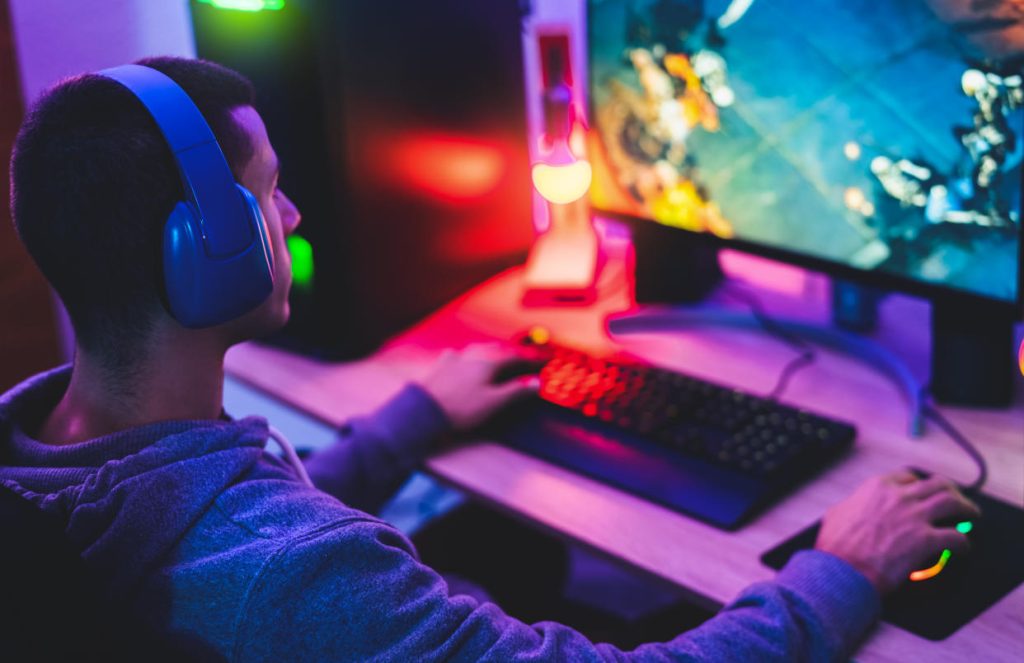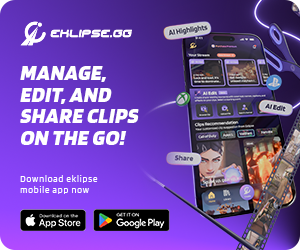
Level Up Your Marvel Rivals Gameplay
Capture your epic wins, clutch moments, and even hilarious fails with Eklipse. Easily create and share highlight reels with your friends—even if you're not streaming!
Learn MoreExperiencing lag, buffering, or low-quality visuals during your Twitch stream? Such issues can ruin viewer engagement and retention. A smoother Twitch stream is essential for keeping your audience entertained and building a loyal following. While these challenges are common, solutions are readily available.
This article outlines practical steps to enhance your streaming performance and eliminate frustrating disruptions. By following these tips, you can optimize your stream for a seamless experience, ensuring both you and your viewers enjoy the content without interruptions.

Why Smooth Streams Matter

A smooth stream is the backbone of a successful Twitch channel. It’s not just about having a good game; it’s about providing an enjoyable viewing experience. When your stream is smooth, viewers are more likely to stay engaged, chat, and become loyal followers.
On the other hand, a laggy or choppy stream can lead to viewers clicking away, and it’s tough to grow when your audience can’t even watch your content properly. So, let’s dive into what causes these issues and how to solve them.
Understanding the Factors Affecting Stream Smoothness
Before we jump into solutions, it’s crucial to understand what causes stream issues. Several factors can impact your stream’s smoothness, and addressing each one is key to achieving a flawless broadcast. Here’s a breakdown of the main culprits:
Internet Connection
Your internet connection is the foundation of your stream.
- Upload Speed: This is the most critical factor. You need sufficient upload speed to send your video data to Twitch.
- Stability: An unstable connection can cause frame drops and buffering.
Hardware
Your computer’s hardware handles the heavy lifting of encoding and streaming.
- CPU (Central Processing Unit): The CPU processes the game and encoding tasks.
- GPU (Graphics Processing Unit): The GPU helps with encoding and rendering graphics.
- RAM (Random Access Memory): Sufficient RAM ensures your system doesn’t lag when multitasking.
Streaming Software
Your streaming software is the tool you use to broadcast.
- Settings: Incorrect settings can lead to poor stream quality.
- Encoding: The encoding process converts your video into a streamable format.
Game Settings
The game you’re playing can also impact your stream.
- Graphics Settings: High graphics settings can strain your system, causing lag.
Step-by-Step Guide to Improving Stream Smoothness
Now that you understand the factors, let’s get into the practical steps I took to improve my stream. Follow these steps to optimize your setup:
1. Test Your Internet Connection
- Visit a speed test website.
- Check your upload speed.
- Ensure it’s at least 5 Mbps for 720p streaming or 10 Mbps for 1080p streaming.
- Restart your router if needed.
2. Optimize Streaming Software Settings
- Open your streaming software (OBS Studio or Streamlabs Desktop).
- Go to settings, then output.
- Set your bitrate to a value that matches your upload speed.
- Choose a resolution and frame rate that your system can handle.
- Select a suitable encoder (x264 or NVENC).
3. Optimize Your Hardware
- Close unnecessary background programs.
- Monitor your CPU and GPU usage while streaming.
- Upgrade your hardware if needed (more RAM, better CPU/GPU).
- Ensure your computer has adequate cooling.
4. Configure Game Settings
- Lower your in-game graphics settings.
- Reduce resolution and texture quality.
- Limit the frame rate if necessary.
- Test different settings to find the optimal balance between performance and visual quality.
5. Monitor Your Stream and Make Adjustments
- Start a test stream and watch it on another device.
- Monitor for frame drops, buffering, and audio issues.
- Adjust your settings as needed.
- Repeat steps 1-4 until your stream is smooth.
Troubleshooting Common Issues
Even after optimizing your settings, you might still encounter some common issues. Here’s how I tackled them:
Frame Drops
- Check your internet connection for stability.
- Lower your bitrate or resolution.
- Close unnecessary background programs.
- Ensure your hardware is not overheating.
Buffering
- Reduce your bitrate.
- Check your internet speed and stability.
- Try a different server location in your streaming software.
- Ensure your viewers have a stable connection.
Audio Issues
- Check your microphone input settings.
- Ensure your audio devices are properly connected.
- Use noise suppression if needed.
- Test your audio levels before going live.
Advanced Tips for Professional Streamers
For those looking to take their stream to the next level, here are some advanced tips:
- Use a dedicated streaming PC.
- Invest in high-quality hardware (capture card, microphone, webcam).
- Experiment with different encoding settings.
- Use overlays and alerts to enhance your stream.
- Engage with your audience regularly.
Recommended Hardware and Software
Based on my experience, here are some recommendations:
- Streaming Software: OBS Studio (free and highly customizable).
- CPU: Intel Core i7 or AMD Ryzen 7 (or better).
- GPU: NVIDIA GeForce RTX series or AMD Radeon RX series.
- RAM: 16GB or 32GB.
- Internet: Fiber connection with at least 10 Mbps upload speed.
Final Thoughts
Improving your Twitch stream is an ongoing process that demands attention to detail and persistence. Achieving a smoother Twitch stream involves understanding what impacts quality, adjusting your settings, and addressing any technical problems. These efforts are crucial for creating an enjoyable experience for your viewers.
By applying the strategies shared here, you can enhance your stream’s performance and build a loyal audience. A stable, high-quality stream is essential for channel growth and viewer retention. Invest time in refining your setup, and you’ll notice meaningful improvements in engagement and community development.
🎮 Play. Clip. Share.
You don’t need to be a streamer to create amazing gaming clips.
Let Eklipse AI auto-detect your best moments and turn them into epic highlights!
Limited free clips available. Don't miss out!
